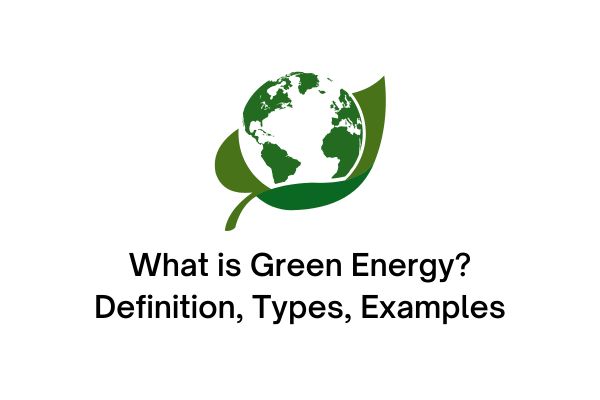In the era of global climate instability, global warming, and energy crisis, the development and use of green energy is receiving increasing attention. Green energy is a much-needed solution to overcome current environmental challenges.
From solar to wind power, renewable energy sources offer a sustainable and environmentally friendly way to meet the world’s energy needs. The advantages of green energy are many. Therefore, you can read in full below:
What is Green Energy?
Green energy is a term that refers to energy obtained from renewable sources. This energy is often referred to by various names, such as clean, sustainable or renewable energy.
Environmentally friendly energy generation does not result in the release of toxic gases into the atmosphere, so it has minimal or even zero impact on the ecosystem.
Types of Green Energy
After knowing what green energy is, we will now discuss several types. There are six types of green energy. For a complete explanation, see below:
1. Solar Power
As a common renewable energy source, sunlight is converted into electrical power through the use of photovoltaic cells.
The functions of solar power include building heating, water heating, cooking, and lighting.
Today, solar power is affordable for household use, even garden lighting, while industrial applications focus on providing power to society at large.
2. Wind Power
Its existence in offshore locations and highland areas means that wind energy utilizes global air flows to spin turbines which then produce electricity.
3. Hydroelectric Power Plants
Also known as hydroelectric power, this energy utilizes water currents from rivers, streams, dams, or similar locations to generate electricity.
Hydroelectric power generation can be applied on a small scale, such as using running water at home, to on a large scale by using evaporation, rain or sea tides.
The height of the generosity of these three green energies lies in the creation process.
4. Geothermal Energy
This environmentally friendly energy source explores the warmth hidden in the earth.
Although exploitation requires drilling which raises questions about environmental impacts, the potential of this energy is enormous.
The use of geothermal heat has been recorded for thousands of years in the form of natural hot springs, and is now used to drive electric turbines.
In the United States alone, geothermal reserves are sufficient to produce ten times as much electricity as coal currently produces.
However, exploitation of these resources requires precise location and strict monitoring to ensure sustainability and environmental sustainability.
5. Biomass
This renewable resource requires careful management in order to be called green energy.
Biomass power plants utilize wood residues, sawdust and organic agricultural waste to produce power.
Although burning these materials produces greenhouse gases, the emissions are much lower than those from fossil fuels.
6. Biofuels
Rather than burning biomass, this organic material can be converted into fuels such as ethanol and biodiesel.
Its contribution to global transportation fuels in 2010 was only 2.7%, but estimates suggest that by 2050, it could meet more than a quarter of the global need for transportation fuels.
Example of Green Energy
Currently, there are various examples of environmentally friendly energy use, covering various aspects such as energy production and heating systems for buildings, road infrastructure and transportation.
Industries are now exploring various sustainable solutions, including:
1. Heating and Cooling in Buildings
Environmentally friendly approaches have been adopted in various types of buildings, from office complexes to individual residences.
This includes the use of solar water heaters, biomass and geothermal fueled heaters, as well as cooling systems powered by renewable energy sources.
2. Industrial Process
Renewable energy is now the main choice to power various processes in industry, using environmentally friendly biomass fuel or electric power.
For example, sectors such as cement, iron-steel and chemical production are starting to adopt the use of hydrogen as a clean energy source.
3. Transportation
The use of sustainable biofuels and electric vehicles is increasingly widespread in various transportation sectors.
The automotive industry is a clear example of the development of electrification aimed at reducing dependence on fossil fuels, while the aerospace and construction sectors are also exploring the potential of electrification for their mobility needs.
That is a brief explanation of what green energy is. The discussion above also discusses types and examples of this green energy.
With this information, it can increase insight for all users.
Read Also : 10 Examples Smart Renewable Energy Innovation
